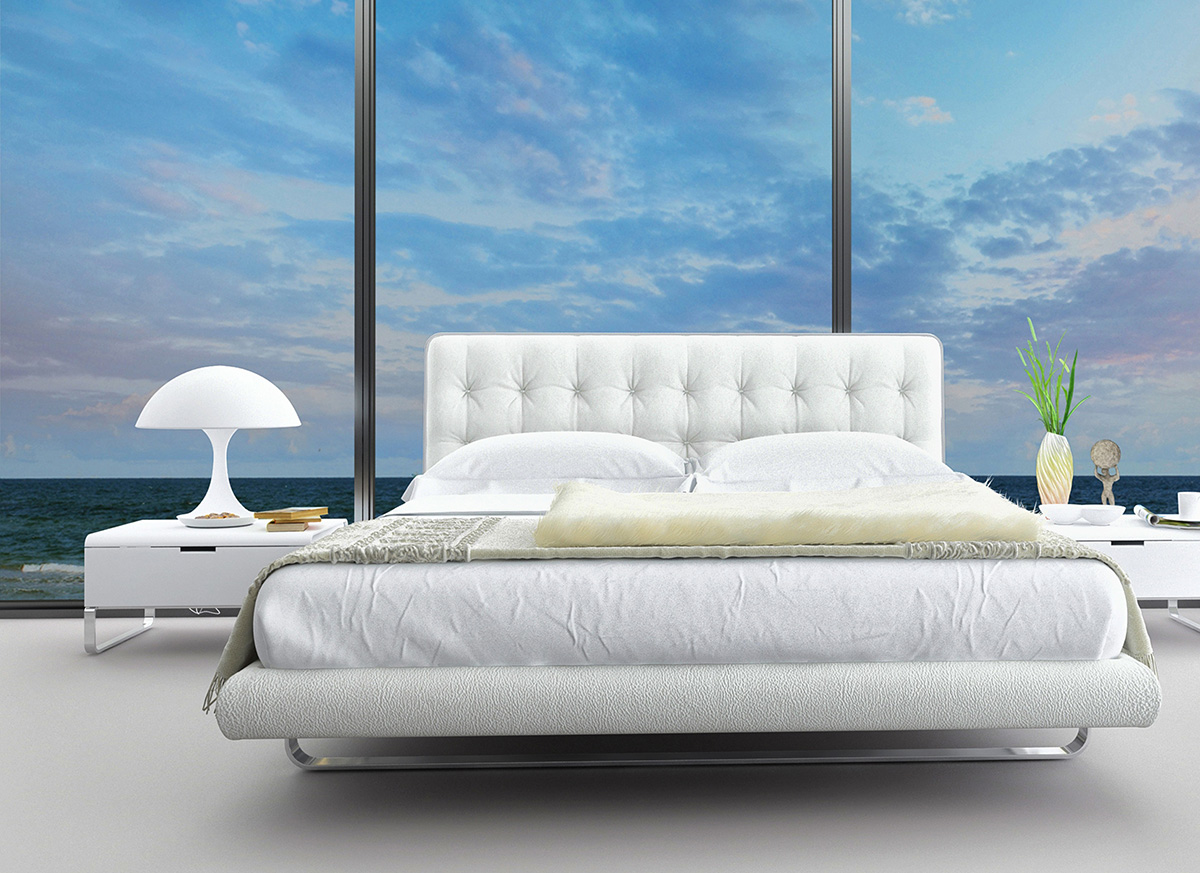 The alarm clock goes off, the window shades rise automatically, the heat kicks in because the house knows you’re cold, the lights are gradually coming on, the coffee starts brewing and the shower is on and warming up to the 85 degrees you prefer. Time to get out of bed.
The alarm clock goes off, the window shades rise automatically, the heat kicks in because the house knows you’re cold, the lights are gradually coming on, the coffee starts brewing and the shower is on and warming up to the 85 degrees you prefer. Time to get out of bed.
Welcome to your home 2.0. No longer is a house just four walls to call your own. The smart home concept, still in its infancy, is starting to change the way we live. Through integrated technology and the Internet Of Things, it will seem like our home has a mind of its own. We’ll communicate with it and it will communicate with us.
In the last few years, home automation has taken off. Technology companies are racing to own the space. This year, Apple introduced HomeKit, which lets you command Siri to do things like lock doors, dim lights and refine the temperature in different areas of the house. Google spent $3.2 billion acquiring Nest Labs, the top learning thermostat on the market, and Amazon released Echo, letting homeowners control compatible devices with their voice. Today, most solutions on the market are voice- or app-controlled.
Right now, the automation is centered on simple things like the thermostat that learns your habits, door locks that track who comes and goes and smoke detectors that can send an alert to your mobile phone. But industry insiders say that we can expect the ways we interact with our homes to ramp up in the next 5 years.
 Currently, you may give voice commands to your house, but soon it will just sense your needs through interaction with wearable technology. Devices similar to a Fitbit wristband like Nymi will transmit information that will let your house know if the temperature needs to change or will link your heartbeat or fingerprint to a preference profile that might include lighting, music and more.
Currently, you may give voice commands to your house, but soon it will just sense your needs through interaction with wearable technology. Devices similar to a Fitbit wristband like Nymi will transmit information that will let your house know if the temperature needs to change or will link your heartbeat or fingerprint to a preference profile that might include lighting, music and more.
While all of this The Jetsons meets The Matrix technology sounds cool on paper, the only way of getting homeowners to adopt it is for them to see value in it. “We have to move from something that would be cool to something that once you have it, it’s vital to your life,” says Kristen Bowring, Director of Business Development for Lowe’s Home Improvement. In fact, when it comes to tech, it’s the early adopters, representing about 1/3 of the population, who are dabbling in smart home technologies right now.
A recent Icontrol Networks State Of The Smart Home Report found that smart security systems are the most popular smart home devices on the market now, with 90% of people citing personal security the top reason for having home automation. Energy savings is a close second. Just over half of the people in the 1,000-person study believed that within 5 years the Internet Of Things will rule the home.
“The home of the tomorrow is just on the horizon — and what’s coming is poised to redefine the way we live, invest in our homes and plan for the future.”
So what will the home of the future look like? Technology is going to turn our homes upside-down. Imagine a kitchen with no dishwasher because new materials won’t need cleaning, and no cooktop because the countertops will use induction heat on command to cook. Those same countertops can also act as screens to control other parts of the home or connect to the Net. Appliances like MAID, a smart microwave, can tell you what to eat, provide recipes and link with your fitness devices to track your calories in and calories out.
For entertainment, TV manufacturers are already creating facial recognition systems to allow televisions to recognize what you want to watch by sensing your mood and suggesting programming. Want to wallow after a break-up? A Nicholas Sparks movie could just automatically start to play! Virtual reality is also a booming business and there’s no doubt it will be part of the home of the future. You’ll be able to create a virtual chat room where you can meet friends, have a front-row seat at a U2 concert or test your gaming skills against anyone anywhere in the world.
Sensors in the home will be able to tell you when the plants need watering, or if you accidentally put a red shirt in with the whites. Good news, we won’t need to clean much in the future because tiny smartphone-sized robots will simply sense when there’s a mess and deploy to take care of it.
 The home of the future might also be the doctor of the future, using wearables that link with Smart TVs to monitor blood pressure and heart rates, and toilets that analyze your waste to detect an array of conditions from infections to food allergies. Already, tools like Iris from Lowe’s can alert you if a relative you’re caring for from afar deviates from a normal routine like opening the fridge or starting the coffee pot.
The home of the future might also be the doctor of the future, using wearables that link with Smart TVs to monitor blood pressure and heart rates, and toilets that analyze your waste to detect an array of conditions from infections to food allergies. Already, tools like Iris from Lowe’s can alert you if a relative you’re caring for from afar deviates from a normal routine like opening the fridge or starting the coffee pot.
What’s more, technology isn’t going to just change the interior of our homes, but the exteriors as well. Expect more 3D printed homes and more efficient building materials. Solar will be built into walls and roofs. Cooling and heating costs will plummet. “We will become energy-independent,” says Texas-based Designer Pablo Solomon. “Home foundations and walls will be able to store electricity like a giant battery.”
A house is more than just a building. For most, it’s their comfortable sanctuary, and despite the rise of robots and technology in the home, it’s possible to have it unobtrusively integrated into comfortable design. In fact, an automated home will look less techie than our current homes since there will be fewer wires and clunky electronic devices. “With new technology making movable walls more feasible in homes, a smaller space can often be made bigger because there is less wasted space,” says Jose Abate of Toronto-based Ambience Design Group.
 The biggest hurdles for the smart home industry to overcome include privacy and security concerns. With your microwave connected to the Cloud, a hacker could actually break into your data through it. With your refrigerator connected, could food companies track your buying habits? How about your home’s electric use being able to signal if you’re on vacation? Or if your locks are controlled remotely, could a cyber terrorist gain access to your home? These are all concerns that smart home appliance manufactures need to address. “To combat security threats, makers of smart gadgets and appliances need to
The biggest hurdles for the smart home industry to overcome include privacy and security concerns. With your microwave connected to the Cloud, a hacker could actually break into your data through it. With your refrigerator connected, could food companies track your buying habits? How about your home’s electric use being able to signal if you’re on vacation? Or if your locks are controlled remotely, could a cyber terrorist gain access to your home? These are all concerns that smart home appliance manufactures need to address. “To combat security threats, makers of smart gadgets and appliances need to
have security in mind from the beginning of manufacturing,” advises Personal Security Expert Robert Sicilliano. “They need to set up a monitoring system for these products for as long as they are in use, so that the smart washer is just as protected in its 15th year of use by the homeowner as it is in its first.” Sicilliano suggests consumers research a company’s security policy and make sure the device can be updated easily before purchasing any smart home device. He also stresses it’s important to protect any device linked to the Internet with a password and to update software as needed.
Get ready for your walls to talk, anticipate needs and think — and everything contained in them as well. The future home is just on the horizon. Regardless of how integrated you decide to go, it won’t affect all the things that make a house a comfortable home like design details, furnishings, art, photos and lots of love.











